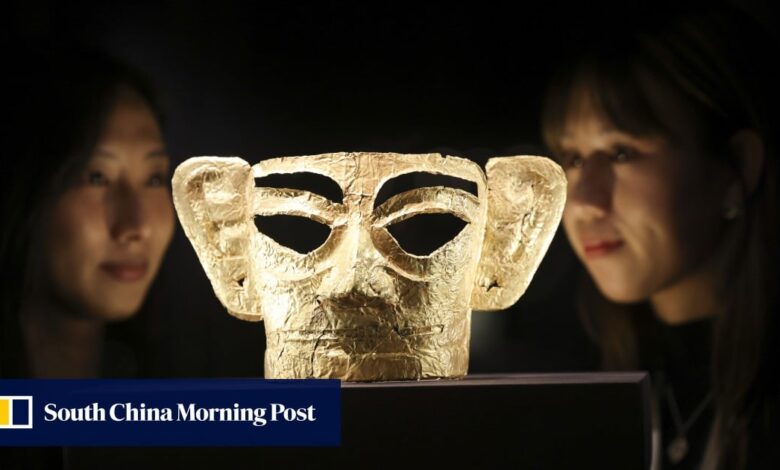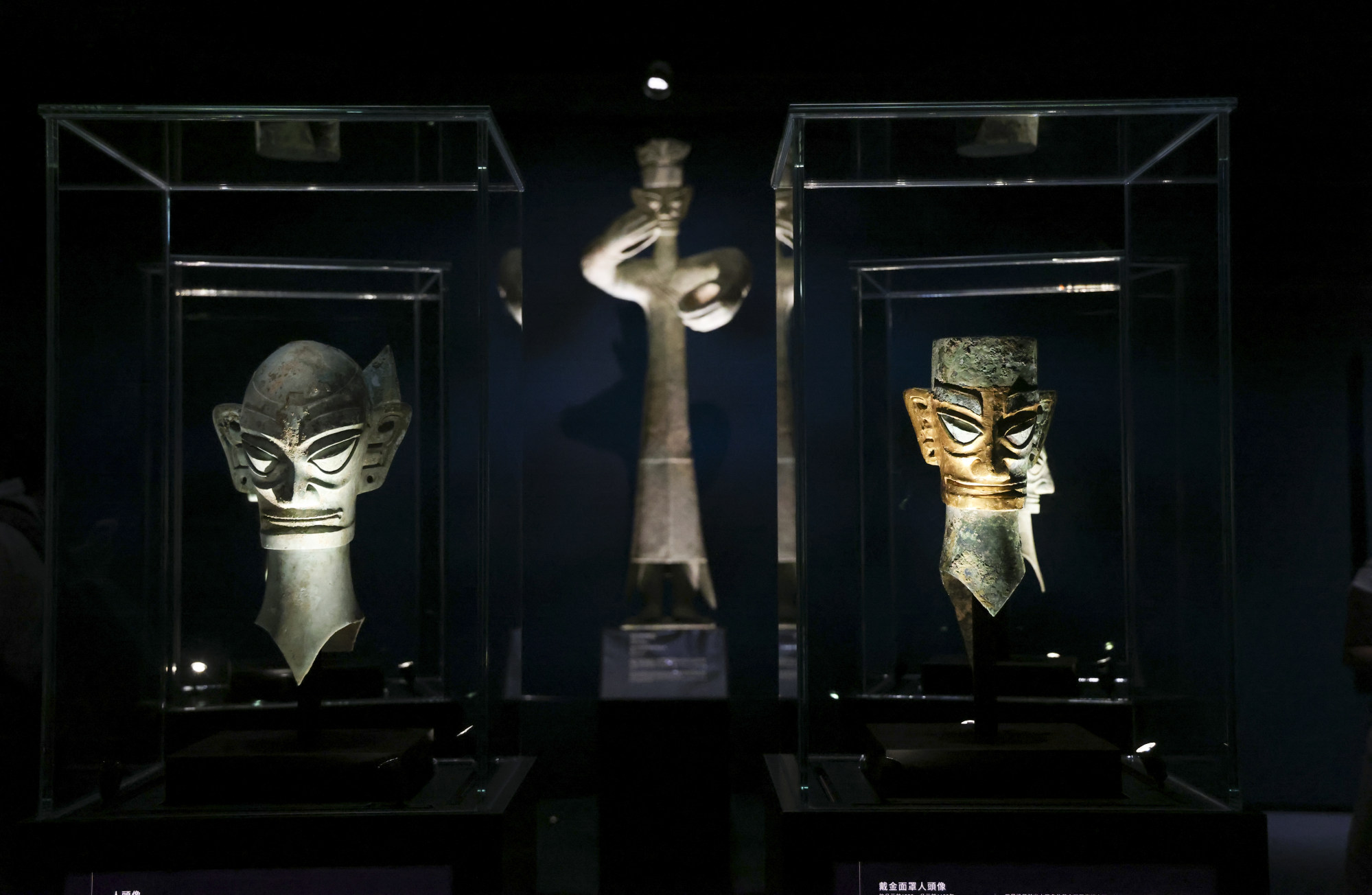Hong Kong’s Sanxingdui exhibition: Palace Museum to impose visitor quota to safeguard relics, give patrons time to explore

[ad_1]
The Hong Kong Palace Museum will limit the number of daily visitors to its new exhibition featuring Sanxingdui artefacts from mainland China’s Sichuan province dating back several millennia, as organisers expect a high turnout.
The exhibition, titled “Gazing at Sanxingdui: New Archaeological Discoveries in Sichuan”, will run from Wednesday until January 8 and feature 120 bronze, gold, jade and ceramic artefacts estimated to be 2,600 to 4,500 years old.
Twenty-three of the items on show are classified as grade-one national treasures.
“It is the first time Hong Kong will hold a major exhibition on Sanxingdui artefacts,” Tianlong Jiao, the museum’s head curator on Tuesday, said.
How holograms in Hong Kong will bring to life sacred Sanxingdui relics
How holograms in Hong Kong will bring to life sacred Sanxingdui relics
The city held smaller exhibitions in the 1990s that featured artefacts from Sanxingdui, but the coming event is expected to be larger in scale and include 55 items excavated between 2020 and 2022.
The museum was predicting a substantial turnout for the exhibition and would ask patrons to be patient as they queued to see the archaeological finds, Jiao said.
“Sanxingsui has been asleep for 3,000 years, a few hours of queuing will be worthwhile,” he said.
Palace Museum director Louis Ng Chi-wa said it would set a quota on the number of daily visitors and limit the number of tickets made available online to ensure the safety of the artefacts and that visitors had a pleasant experience.
“I urge visitors to book tickets ahead. There may not be tickets if you decide to queue at the museum,” he said, adding that the same exhibition had sold out in Sichuan. “Staff might let in more visitors depending on the situation.”
Ticket sales started on September 1, with those for general admission priced at HK$150 and concessionary ones costing HK$75.
A Post reporter found that all time slots for the first four days of the exhibition were full.
The first artefacts recovered at the Sanxingdui site in the 1920s are considered one of the most important archaeological discoveries of the 20th century, as well as ranking nationally alongside the recovery of the Qin dynasty’s (221-207BC) Terracotta Warriors in 1974.
Mainland archaeologists have said they believe the relics were remnants of the Shu Kingdom dating back to around 1800BC.
“Finds from Sanxingdui have never failed to surprise us. [The discovery] of such items with unique designs, in particular ones that comprise multiple parts, is something beyond our imagination,” Jiao said.

The museum said the relics had “transformed [our] understanding of the advanced ancient culture in the Chengdu Plain in particular and the upper Yangtze River valley”.
The exhibition in Hong Kong would also mark the first time some of the artefacts had left the mainland, it added.
Key items on display at the Palace Museum include a bronze head unearthed in 2021 that is 1.31 metres (4-feet) wide, 71cm tall and weighing 65.5kg (144lbs). The largest of its kind recovered so far, the item is believed to be a centrepiece for rituals.
The exhibition also includes a bronze statue of a mythical creature that measures more than 1 metre in length and has a human figurine perched on its back.
The item, also the largest of its kind to be found, could have formed part of a bigger ritual artefact from a temple, according to a reconstructed scene that features in the exhibition.
Unmasking China’s Sanxingdui relics, some of which will come to Hong Kong
Unmasking China’s Sanxingdui relics, some of which will come to Hong Kong
Other highlights going on show are the base of a bronze sacred tree and masks sporting exaggerated facial expressions that have not been recorded anywhere else in China.
The new exhibition is divided into four sections which dive into the art, urban life, belief systems, as well as the origins and legacy of the culture discovered in Sanxingdui.
The museum said it aimed to “exemplify the ‘diversity in unity’ developmental pattern of Chinese civilisation”.
Visitors can also learn more from about 10 multimedia displays, including a holographic projection and virtual reconstructions that explore the deeper meaning behind the archaeological finds.
The museum’s opening hours will be extended to 10am to 8pm for the Mid-Autumn Festival on Friday and also the day after, as well as Monday and Tuesday of next week.
Arrangements for National Day on October 1 have yet to be announced.
[ad_2]
Source link






